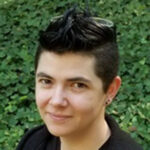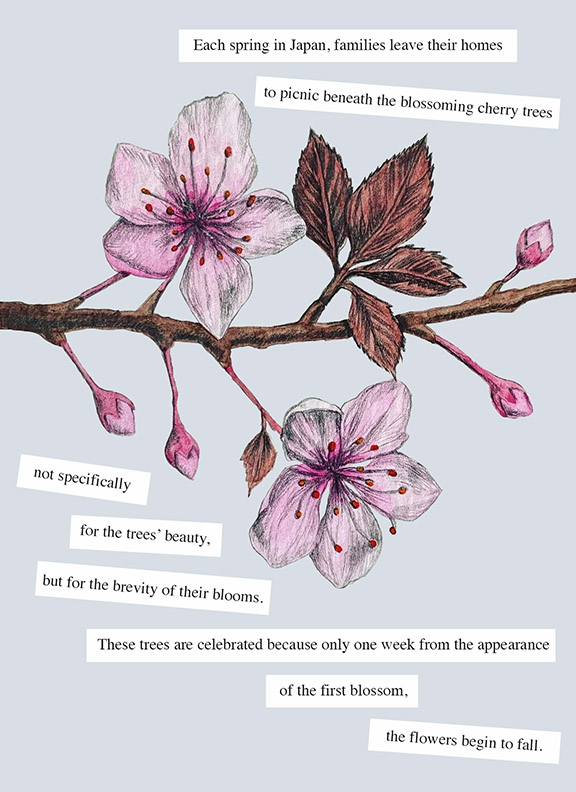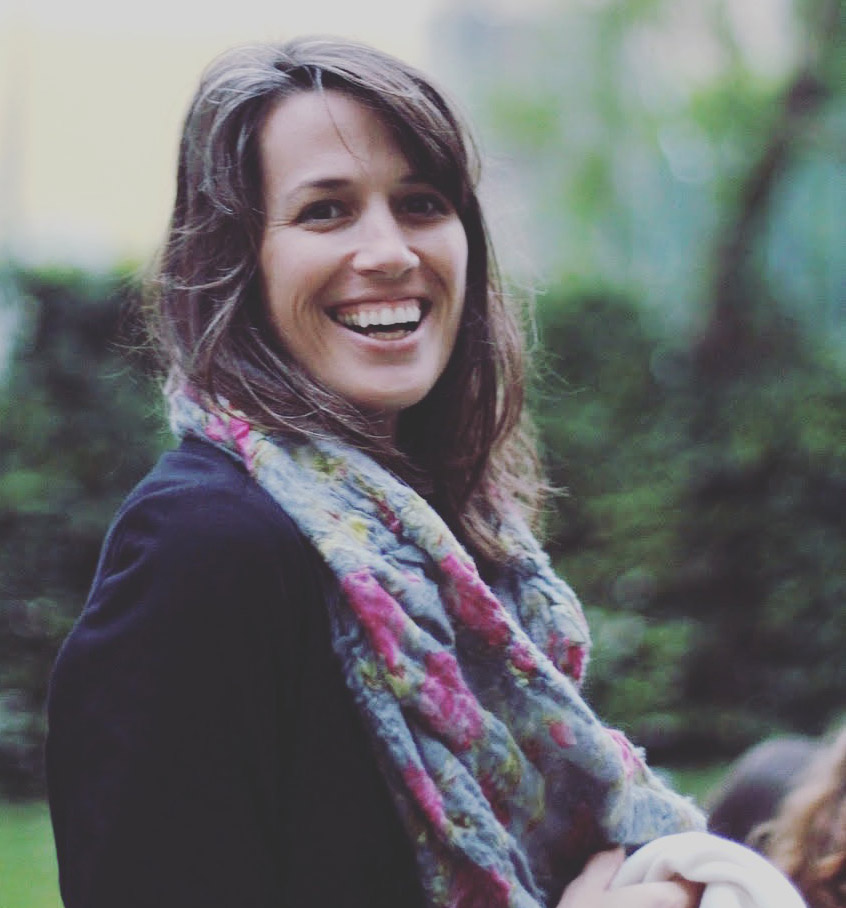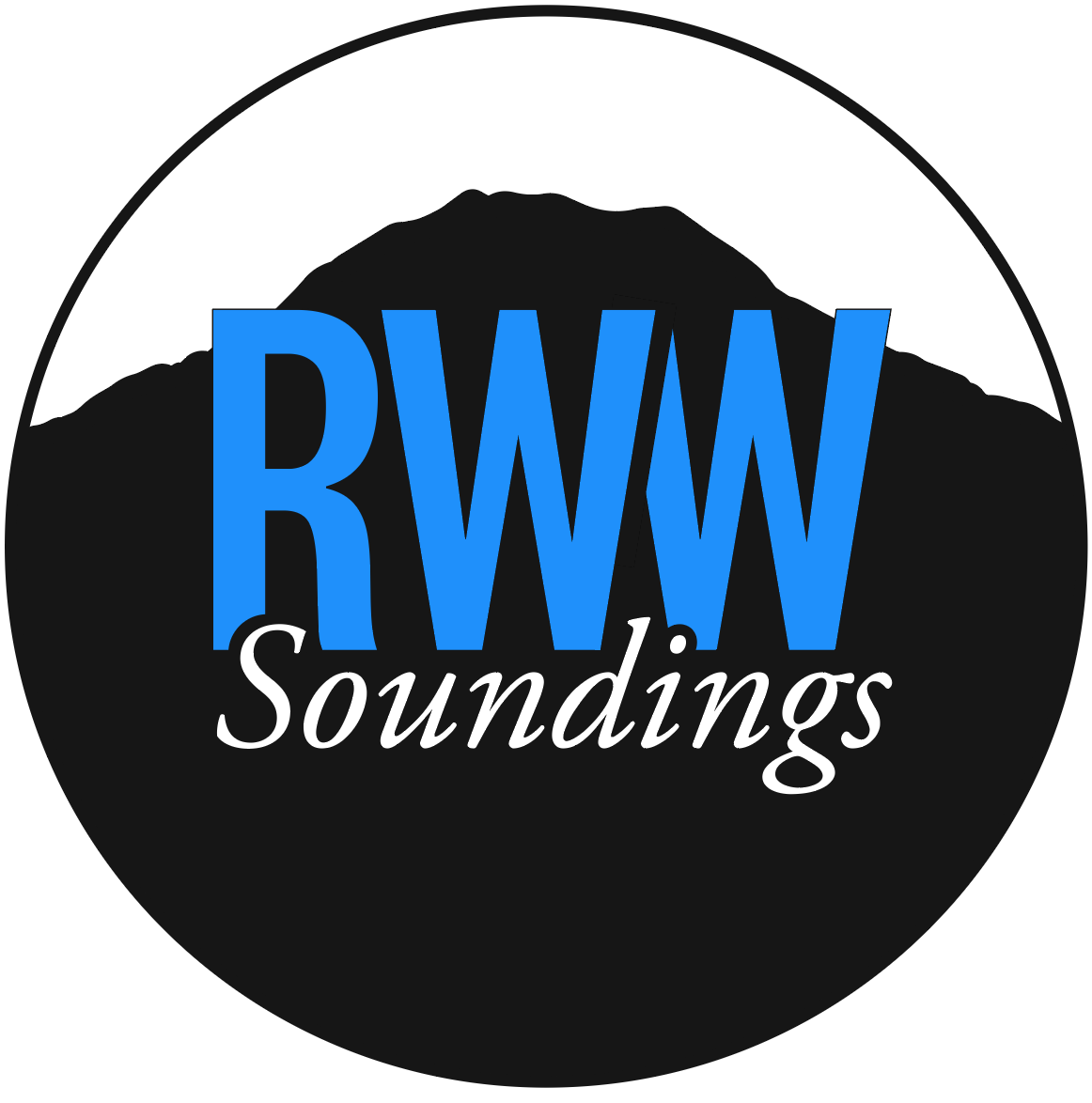Spring 2022
3
Artistic Intersections:
A Conversation with Katie Duane
Keats Chaves, Contributing Writer (Class of 2022)
Artistic Intersections:
A Conversation with Katie Duane

Keats Chaves
Contributing Writer
Class of 2022
One of the most unique aspects of RWW is the required Outside Experience (OE) in the second year, designed to expand students’ knowledge and skills far beyond what they would ordinarily get through their mentorships and summer residencies. Recently, I was able to catch up with second year student Katie Duane (2023) to get insight into her OE exploring her relationship with writing and art and the way the two forms function together to enhance her craft.
Keats Chaves: Can you tell us more about your Outside Experience project? What made you choose this particular project?
Katie Duane: Sure! I decided to focus on figuring out how to bring together my writing and my drawing. I’m structuring the OE project around this basic format: learn, do, then teach! In the fall, I took several art classes; it’s been a long time since I have taken any sort of formal visual arts class, so this was helpful in getting the wheels turning, grinding out old rust, and moving past many of my typical insecurities about drawing or mark-making. I’m working on using what I learned during my fall classes to experiment with different ways of integrating my writing and visual art. The last phase of my OE will be a workshop at the Just Buffalo Literary Center in May.

KC: Visual art and creative writing are often closely connected—it’s not uncommon for a writer to also be an artist, and vice versa. How intrinsic is art to your writing, and what (if any) impact has that had on your work for RWW?
KD: I’ve always enjoyed both writing and drawing. Growing up, I never felt like I had to choose between them. I wrote short stories about girls and their horses or girls and hopeless crushes, and then supplemented them with my own drawings! I formally studied illustration in undergrad and became a high school art teacher. The struggle to integrate my writing with my drawing became increasingly difficult—the intersection of the two largely dissolved. For the last several years, my primary creative impulse has been to write, but I’m happiest when I have outlets for both my visual and verbal ideas. My writing tends to be more thoughtful or intentional, and my drawing more cathartic. So, I wanted to dedicate my OE to finding ways of bringing these impulses together. I think these two practices strengthen one another—having a drawing practice helps my writing to be more imagistic, and writing descriptively inspires different ideas for drawings and paintings.
KC: Sometimes, when we start a project that combines two or more aspects of ourselves that we’re already very confident in, we go into it with a preconceived idea of how things will play out—has there been anything about this project that really caught you off guard?
KD: To be honest, I didn’t have many ideas about how this would play out. I’ve never successfully figured out how to combine my writing and drawing before, so this year has mostly felt like a giant question mark followed by a long blank space. I mean, I’d be lying if I didn’t admit there wasn’t a part of me that hoped this would magically come together and unfold with ease. This is a common pitfall of mine, hoping for magical results while forgetting that what appears magical can often be traced backward along a winding, confusing path littered with mistakes, abandoned ideas, embarrassing failures, and moments of hopelessness. Grounding this desire to bring together my drawing and writing in a formal project with a deadline has helped me be more realistic about creative processes. And I don’t want this project to end when I turn in my OE report: one year of learning and experimenting isn’t enough time to figure this all out. But I’m drawing and painting regularly again, so there’s hope!
“Grounding this desire to bring together my drawing and writing in a formal project with a deadline has helped me be more realistic about creative processes.”
KC: You have plans to provide a hybrid (online and in-person) workshop at the end of your OE—can you tell us more about your vision and/or intent for this workshop?
KD: I’m still working out specifics, but at the moment, I plan on there being both writing and drawing prompts. We’ll focus on generating imagistic writing, particularly “sense of sight,” and then utilize our writing to create drawings in response to what we’ve written. The idea will be to emphasize specific aspects of the writing: mood or tone, or if desired, a particular image or object. The colors, lines, shapes, or images that are drawn should help tell the story, even if it just communicates excitement with bright colors or squiggly lines. My hope is that the students (and myself) will more clearly see the relationship between text and image. Also, it’s an opportunity to simply play with being creative, something adults don’t give themselves nearly enough time for! (Myself included!)


Katie Duane in Denmark.
KC: Lastly, what advice do you have for someone just starting to plan their OE, or who might not even know where to begin?
KD: I’d recommend starting by thinking of what’s most important to you. What part of your writing life is begging for your attention? What won’t be quiet? What do you need? I had several long lists running in a notebook. All the ideas were interesting, intriguing, but the one that kept plucking at my attention was figuring out how to bring together my writing and drawing. It felt like that had to happen first. Before I learn about how small presses work, or how literary magazines are edited, I need to figure out why my writing and drawing impulses have diverged, and (how) can they be brought back together? Answering that question will better help me understand what kind of writer I am, which will inform what I focus on during my thesis year and after graduation. So, I’d suggest considering various options that interest you, but then choosing the one that will help you the most right now, in the middle of your RWW experience.
Katie Duane is a writer, web designer, and former high school art teacher. When she’s not writing website code, she’s writing essays exploring the connections between personal narratives and science, mythology, and history. Her writing can be found in The Manifest-Station and Sheepshead Review. She lives in Buffalo, NY.
